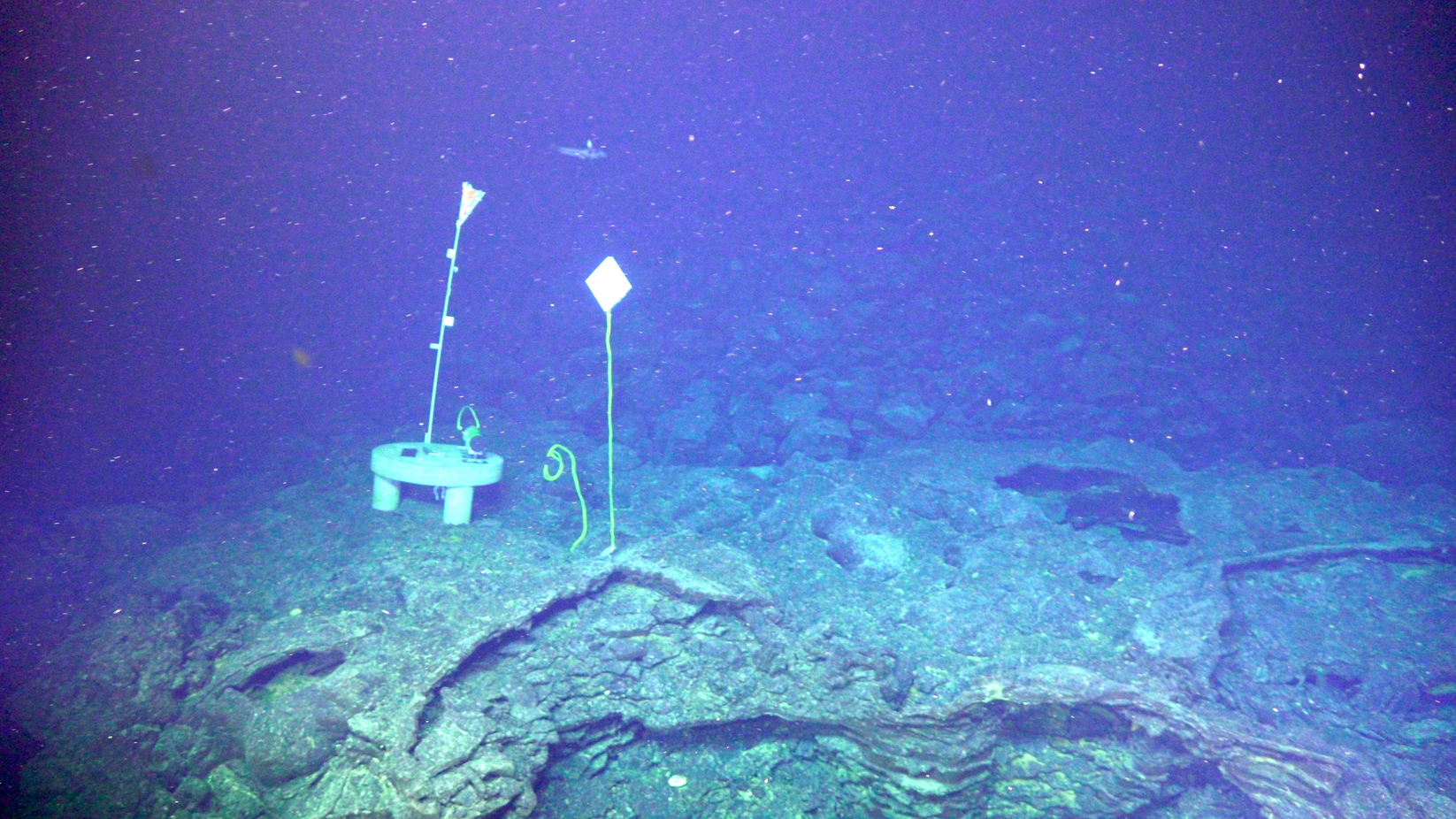Image Gallery: Striking Photos of Locust Swarms
Moving swarms
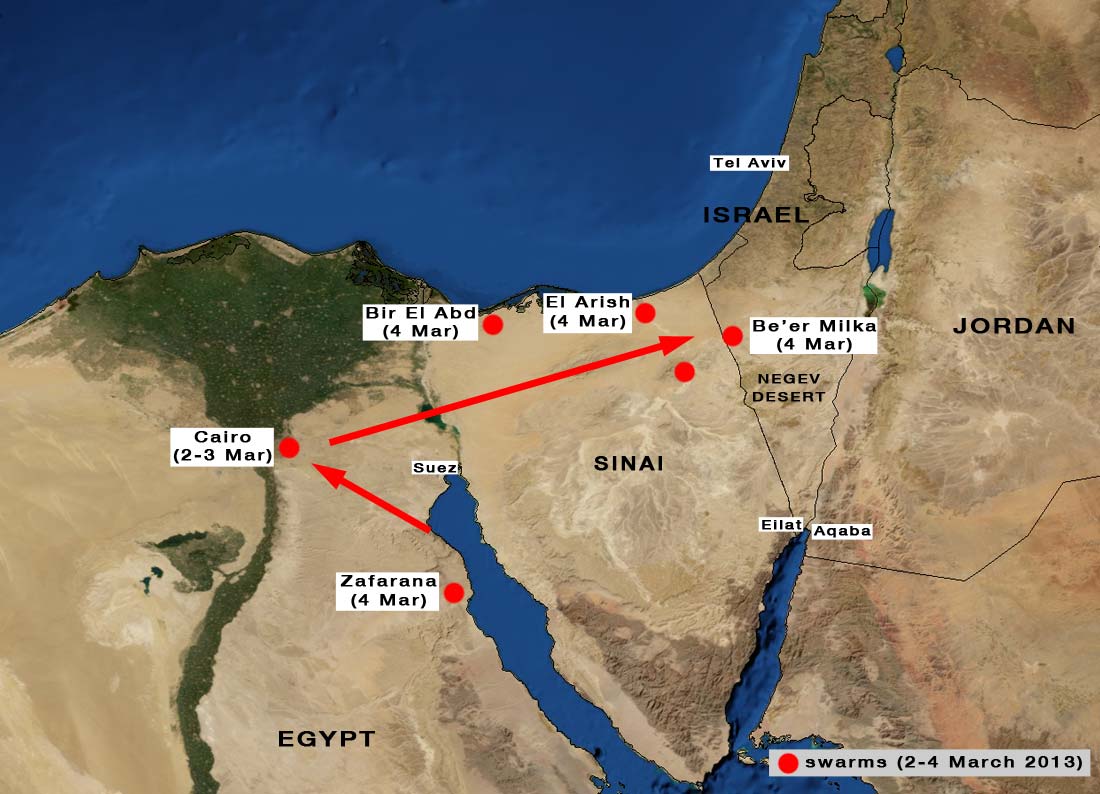
A few small swarms moved across the northern Sinai Peninsula during the first week of March 2013.
Northeast travel

Locusts can move to NE Egypt, Sinai and Israel on March 3-4, 2013.
The 8th Plague?
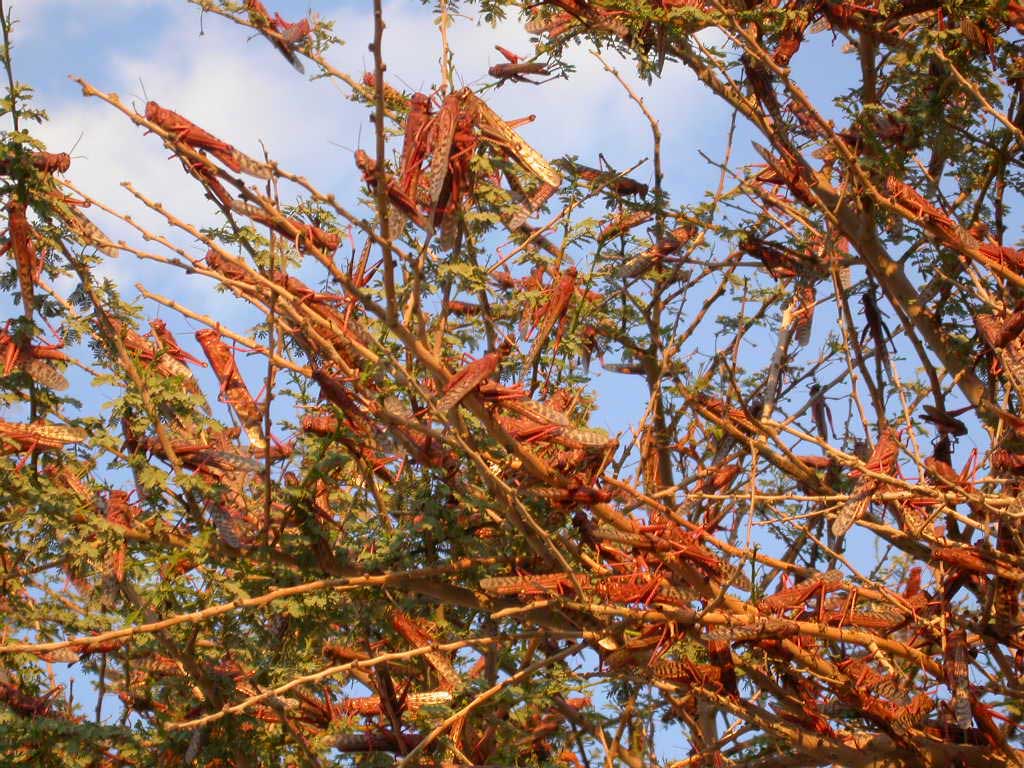
Swarms of the desert locust, known as Schistocerca gregaria, were considered the eighth plague sent into ancient Egypt as a punishment for suppressing the Jews, according to the bible. Here a desert locust swarm in Israel in 2004.
Packed Pack
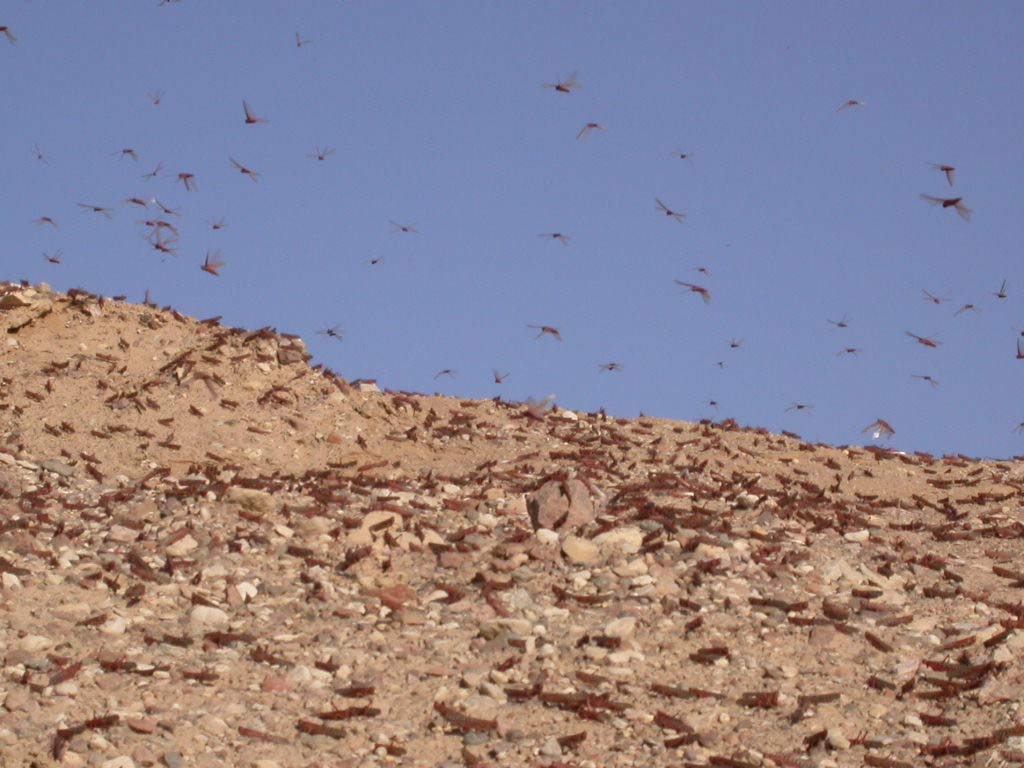
These short-horned grasshoppers can form highly mobile swarms, comprising more than 30 million locusts per square mile, which can travel up to 90 miles (150 kilometers) a day. Here an image from the 2004 desert locust swarm in Israel.
Amazing Appetites
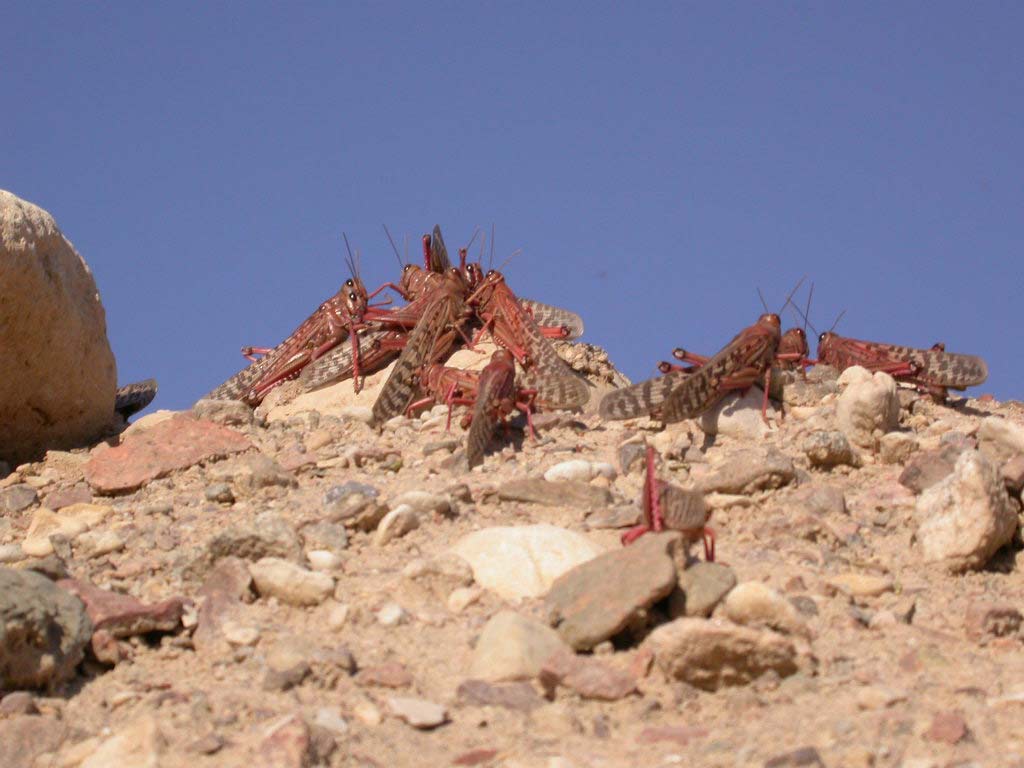
Desert locusts can put down some food, able to consume the same amount of food that several thousand people would eat, according to the U.S. Department of Energy.
Swarming
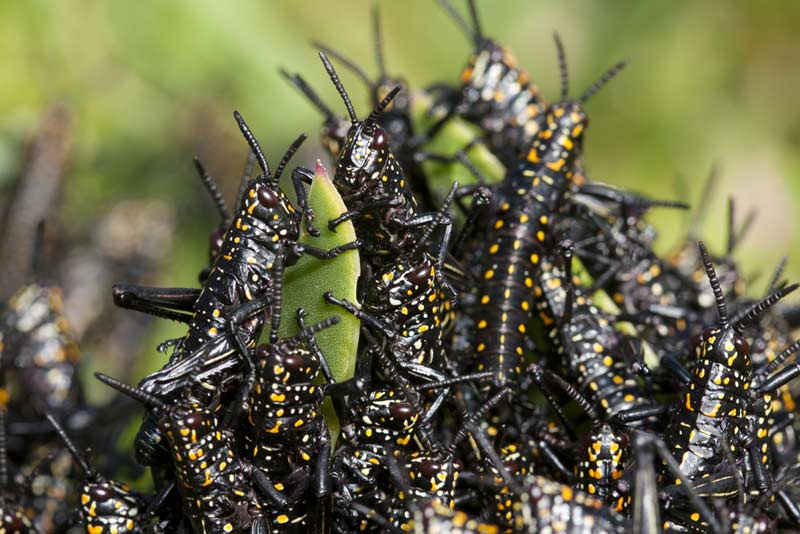
Locusts differ from grasshoppers in that they have the ability to change their behaviour and habits and can migrate over large distances. Here, a swarm of locusts
Locust life
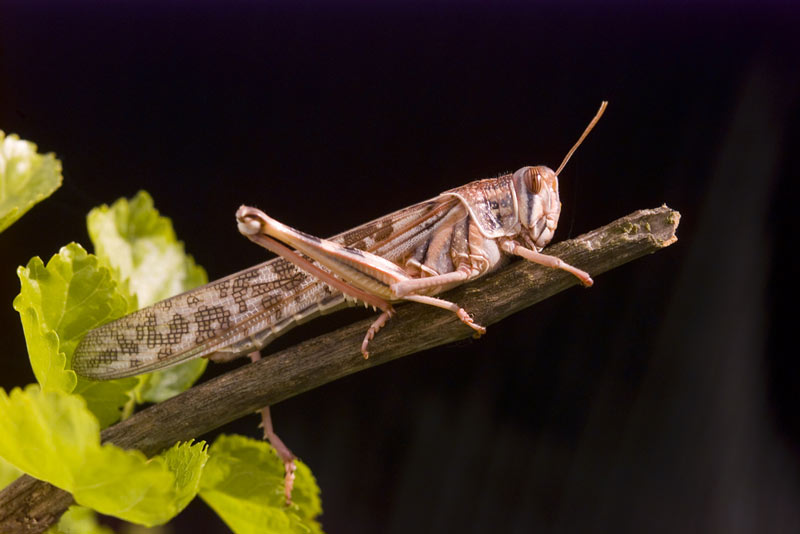
"A Desert Locust lives a total of about three to five months although this is extremely variable and depends mostly on weather and ecological conditions. The life cycle comprises three stages: egg, hopper and adult. Eggs hatch in about two weeks (the range is 10-65 days), hoppers develop in five to six stages over a period of about 30-40 days, and adults mature in about three weeks to nine months but more frequently from two to four months," states the Food and Agriculture Organization of the United Nations.
Get the world’s most fascinating discoveries delivered straight to your inbox.

